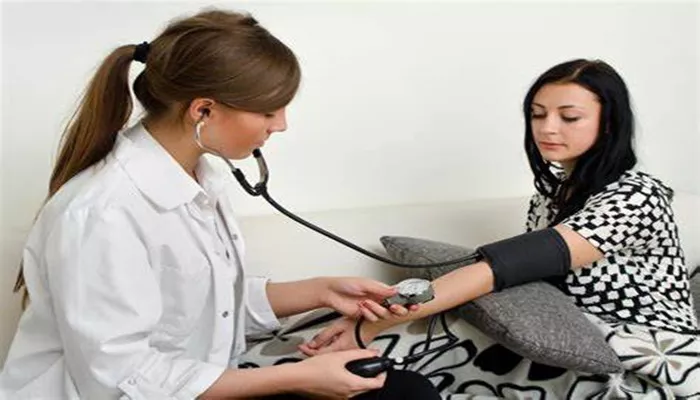Head injuries are a significant public health concern, often leading to severe complications, including hypertension.
Understanding the relationship between head injuries and elevated blood pressure is crucial for effective management and treatment in clinical settings. This article explores the mechanisms behind the rise in blood pressure following head trauma, detailing the physiological responses involved, the implications for patient care, and potential treatment strategies.
Understanding Hypertension After Head Injury
Hypertension, or high blood pressure, is commonly observed in patients after head injuries. This phenomenon can be attributed to several interrelated physiological mechanisms that activate in response to trauma.
1. Physiological Response to Injury
When the brain experiences trauma, it triggers a cascade of physiological responses aimed at preserving cerebral perfusion.
The body responds to injury through the activation of the sympathetic nervous system (SNS), which releases catecholamines such as adrenaline and noradrenaline. These hormones increase heart rate and contractility, leading to elevated cardiac output and systemic vascular resistance, which ultimately raises blood pressure.
2. Catecholamine Release
The release of catecholamines is a significant factor in post-injury hypertension. Severe brain injury can cause regional damage that stimulates the hypothalamus and other areas of the brain responsible for autonomic regulation. This leads to an increased sympathoadrenal tone, resulting in heightened blood pressure levels45. The relationship between catecholamine levels and blood pressure is complex; while elevated catecholamines can lead to hypertension, they also play a role in maintaining cerebral perfusion pressure (CPP) when autoregulation is impaired.
3. Impaired Cerebral Autoregulation
In a healthy brain, cerebral autoregulation maintains stable blood flow despite fluctuations in systemic blood pressure.
However, traumatic brain injury (TBI) often disrupts this autoregulation. When autoregulation fails, increases in systemic blood pressure can directly affect cerebral capillaries, leading to increased intracranial pressure (ICP) and further complicating the clinical picture. This impaired regulation can result in a vicious cycle where high blood pressure exacerbates cerebral edema and increases ICP.
Pathophysiology of Hypertension Post-Head Injury
Understanding the pathophysiological mechanisms behind hypertension after head injury involves examining various factors that contribute to this condition.
1. Increased Intracranial Pressure
Following a head injury, increased ICP is a common occurrence due to swelling or bleeding within the skull. Elevated ICP can compress cerebral vessels, reducing cerebral perfusion and prompting compensatory mechanisms that increase systemic blood pressure to restore adequate CPP45. This compensatory response can lead to further increases in ICP if not managed appropriately.
2. Neuroendocrine Activation
The neuroendocrine response to head trauma involves the activation of stress pathways that release hormones affecting cardiovascular function. The hypothalamic-pituitary-adrenal (HPA) axis is activated during stress, leading to increased cortisol levels alongside catecholamines. This hormonal surge contributes to vasoconstriction and heightened cardiac output, further elevating blood pressure.
3. Autonomic Dysregulation
Head injuries can lead to autonomic dysfunction characterized by an imbalance between sympathetic and parasympathetic activity.
Following trauma, there is often an exaggerated sympathetic response combined with reduced parasympathetic tone, resulting in sustained hypertension46. This dysregulation complicates treatment as traditional antihypertensive therapies may not be effective due to the underlying autonomic imbalance.
Clinical Implications
The rise in blood pressure following head injury has significant clinical implications for patient management.
1. Risk of Secondary Injury
Elevated blood pressure can contribute to secondary brain injury by increasing ICP and worsening cerebral edema. This secondary injury can lead to poorer outcomes for patients with TBI. Therefore, monitoring and managing blood pressure is critical in these patients.
2. Treatment Challenges
Treating hypertension post-head injury presents unique challenges due to altered hemodynamics compared to essential hypertension. For instance, standard antihypertensive medications may not be effective or could exacerbate existing cardiovascular issues. Medications such as propranolol have shown promise by effectively lowering blood pressure while addressing underlying hemodynamic abnormalities without significantly increasing ICP.
3. Guidelines for Management
Current guidelines emphasize maintaining systolic blood pressure below certain thresholds (e.g., 160 mmHg) after severe TBI to prevent secondary injury. However, there is ongoing debate regarding the optimal management of hypertension post-injury due to its association with both positive and negative outcomes.
Treatment Strategies
Effective management of hypertension following head trauma requires a multifaceted approach tailored to individual patient needs.
1. Monitoring Blood Pressure
Continuous monitoring of blood pressure is essential in patients with head injuries. Early identification of hypertension allows for timely intervention and adjustment of treatment strategies.
2. Pharmacological Interventions
Pharmacological interventions should be carefully considered based on individual patient profiles:
Propranolol: A beta-blocker that has been shown to reduce heart rate and lower circulating catecholamine levels effectively while managing hypertension without significantly increasing ICP.
Hydralazine: While this vasodilator may lower systemic vascular resistance, it can increase heart rate and potentially worsen ICP; thus, its use should be approached with caution.
Other Agents: Additional agents may include calcium channel blockers or ACE inhibitors tailored based on patient response and hemodynamic status.
3. Non-Pharmacological Approaches
In addition to medications, non-pharmacological strategies such as positioning (elevating the head) may help manage ICP and improve cerebral perfusion without exacerbating hypertension.
Conclusion
The rise in blood pressure following head injuries is a complex interplay of physiological responses aimed at preserving cerebral perfusion amidst compromised autoregulation. Understanding these mechanisms is vital for developing effective treatment strategies that mitigate risks associated with secondary brain injury while managing hypertension effectively.
As research continues into the optimal management of hypertension post-head injury, clinicians must remain vigilant in monitoring these patients’ hemodynamic status and adjusting treatment protocols accordingly. By integrating both pharmacological and non-pharmacological approaches tailored to individual needs, healthcare providers can improve outcomes for patients suffering from traumatic brain injuries while addressing the challenges posed by post-injury hypertension effectively.
Related topics:
- What Are The Latest JNC Guidelines for Hypertension?
- Does Hctz Cause Headaches?
- Who Class for Pulmonary Hypertension?

